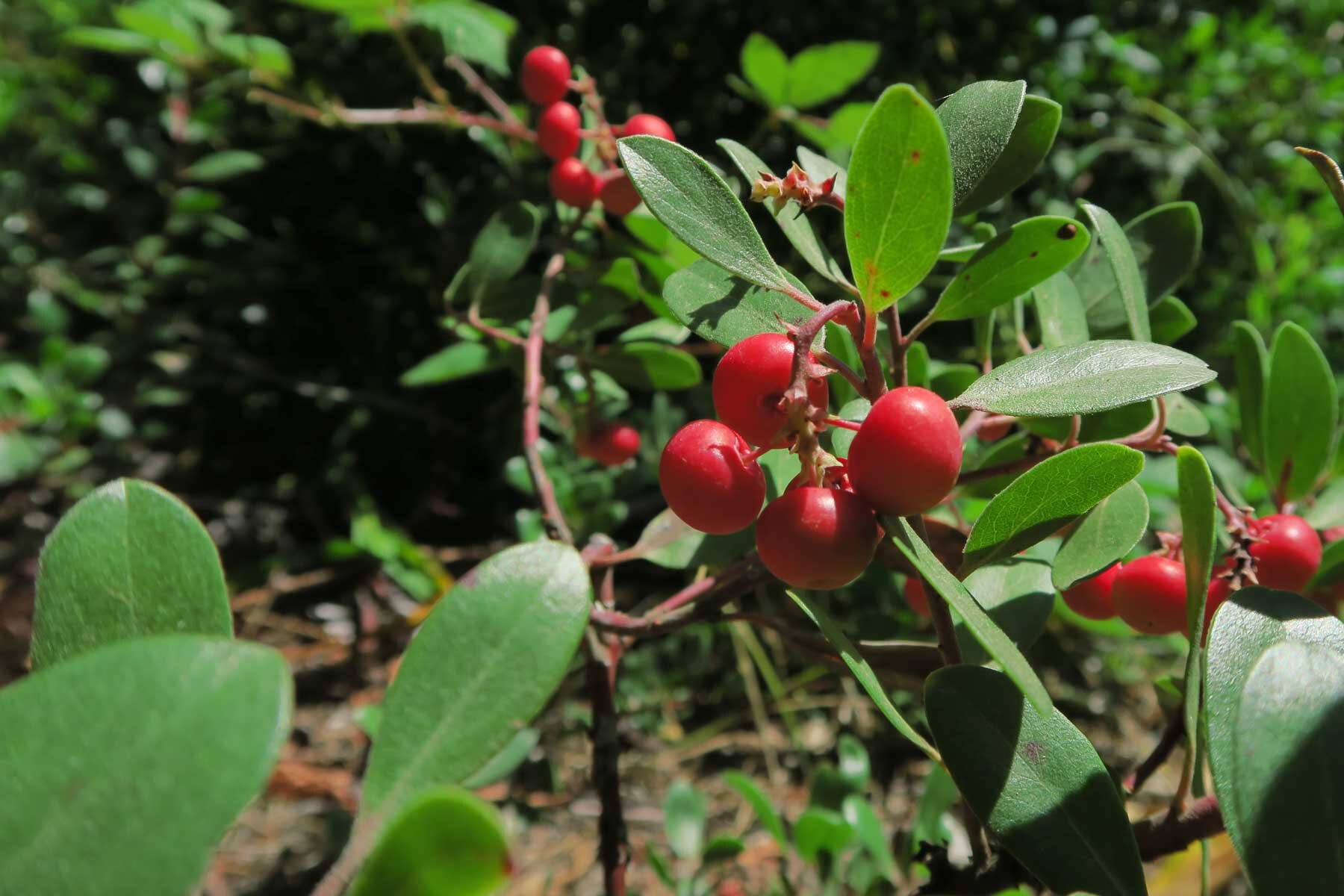Summer Sipping

Make a Tasty Cider from Manzanita’s “Little Apples”
by Torrey Douglass
For years I only appreciated manzanita berries for their color—ruby red, pea-sized pearls that make festive homemade tree garlands come holiday time. They start to ripen in late July and August, a cheerful splash of red on the forest’s edge where manzanitas grow, a joyful outburst of pretty as nature does her bling thing.
So I was surprised when, on a walk with friends, their forest-savvy daughter ran up to a manzanita tree and began snacking. My friend assured me they have a sweet-tart flavor and starchy texture, and as long as you avoid champing down on the seeds, the “little apples” (manzanita’s meaning in Spanish) are a safe and tasty find. Like all fruit with fleshy skin and a single seed stored within a central “stone,” the manzanita berries are technically called drupes. They brighten their branches well into fall, just when critters like deer, racoon, quail, and coyote are foraging to fatten up for the cold months.
Besides the carbohydrates that calorie-hungry animals are craving before winter, manzanita berries are rich in Vitamin C and potassium. But like regular apple seeds, their pips contain hydrocyanic acid, or cyanide, which is dangerous if consumed in quantity. So be sure to spit out the seeds if eating the berries straight from the tree, or, if you’re using them in a recipe, be careful to just bruise the fruit to release its flavor—don’t crush or blend since that could break open the seeds. As long as you exercise a little caution, you can easily concoct a refreshing summer sipper when poured over ice (front porch not included).
Manzanita Berry Punch
Collect manzanita berries and wash thoroughly—putting them in a colander and gently stirring them by hand while running water over them works well. Using a mortar and pestle, gently break up the fruit while being careful to keep the stones whole. Some people remove the stones at this stage, but it is not necessary.
In a 4:1 ratio of water to berries, heat water to just below boiling. (Don’t boil the water, as adding boiled water to the fruit can destroy the vitamins.) Add your sweetener of choice to the water at this stage. Honey dissolves nicely, but cane sugar works as well. You can also add a few sprigs of mint as the water heats, but remove before the next step so the flavor isn’t too strong.
In a clean container like a carboy or other large, glass jug, add the berries and then pour the heated water in. Let sit for 24 hours. Strain the juice into a different jug. Taste to test for sweetness and adjust if needed (a little goes a long way). Refrigerate and use within a week.
For a bubbly treat, simmer the juice to reduce it down to a quarter of its volume, then add the concentrate to carbonated water.
Photo by John Rusk available under the Creative Commons Attribution 2.0 Generic license. https://www.flickr.com/photos/john_d_rusk/17998226283/
